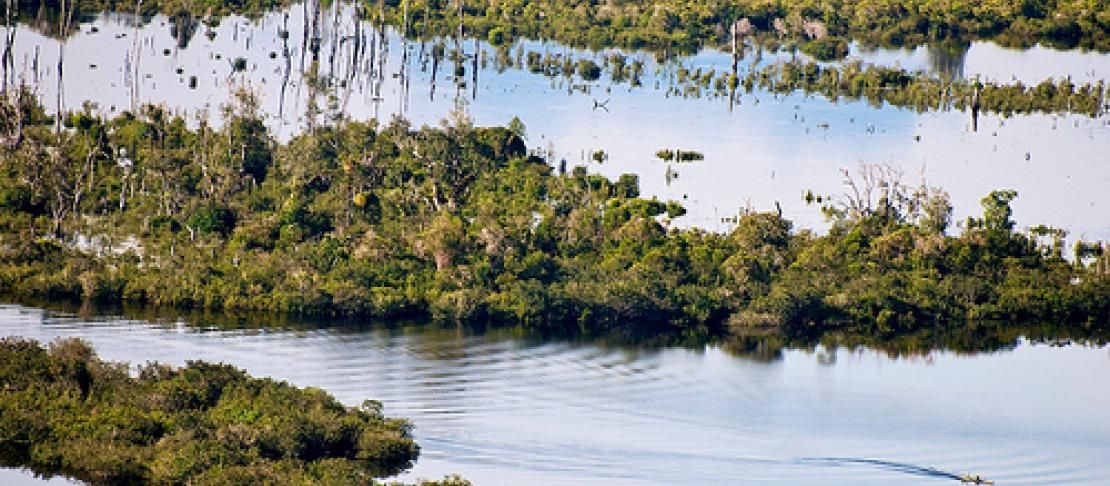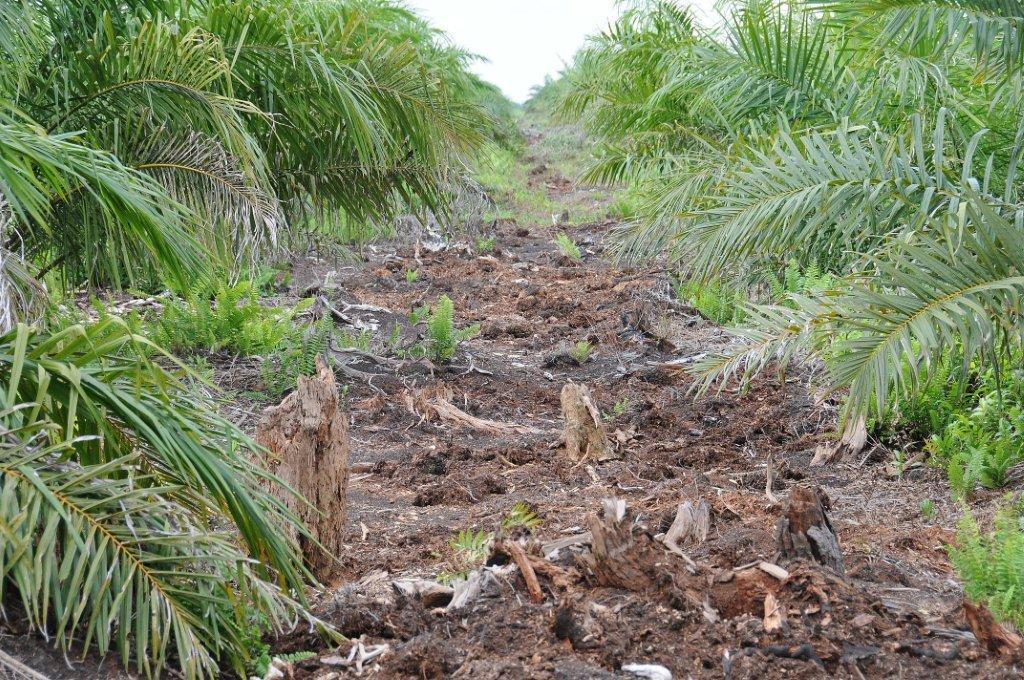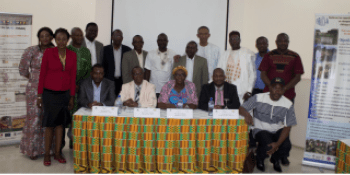New guidelines address agricultural emissions in peatlands and mangroves

The Wetlands Supplement to the 2006 GHG Inventory Guidelines adopted in October mandates governments to improve GHG emissions reporting for wetlands, including huge agricultural sources such as oil palm, shrimp farming, and sago.
Periodically national governments complete greenhouse gas inventories that assess emissions and removal of greenhouse gases from the atmosphere. Such inventories provide essential information to scientists, policy makers, and other stakeholders concerned with mitigating climate change.
All countries are obliged to use Intergovernmental Panel on Climate Change (IPCC) reporting guidelines, and now those guidelines have been improved.
At its October meeting in Batumi, Georgia, the IPCC adopted a new Methodology Report, prepared by its Task Force on National Greenhouse Gas Inventories (TFI). The 2013 Supplement to the 2006 IPCC Guidelines for National Greenhouse Gas Inventories: Wetlands (Wetlands Supplement) provides new guidance for countries to cover wetlands, an important – and missing until now – part of national emissions inventories.

Oil palm production on peatlands in Indonesia causeS significant greenhouse gas emissions. Photo: CIFOR
Approximately 25% of all forest degradation and deforestation in Southeast Asia occurs on peatlands. Wildfires, land-clearing fires and cultivation in drained peatlands in Southeast Asia contribute substantially to greenhouse gas emissions to the atmosphere when organic carbon that is normally underwater is suddenly exposed to the air, where it decomposes and emits carbon dioxide.
The Wetlands Supplement provides a comprehensive set of new emission factors for major tropical land uses in peatlands and mangroves and guidance for estimating emissions from fires. This will increase pressure to address agricultural emissions in peatlands and mangroves – high carbon ecosystems coming into sharper focus in the UNFCCC.
“By filling most of the gaps for wetlands reporting in previous IPCC Guidelines, countries can now present their inventories in a more complete way, which is one of the IPCC criteria for reporting greenhouse gas inventories,” said Thelma Krug, one of the Co-Chairs of the Task Force on National Greenhouse Gas Inventories (TFI).
This supplement drew upon research supported by the CGIAR Research Programs on Climate Change, Agriculture, and Food Security (CCAFS) Theme on Low-Emissions Agriculture and on Forests, Trees and Agroforestry. Highlights include:
- Led by Kristell Hergoualc’h at the Center for International Forestry Research (CIFOR), scientists from CIFOR, the World Agroforestry Centre (ICRAF), and the Indonesian Soils Research Institute contributed over five years of measurements in wetland agricultural systems which have very high emissions.
- CIFOR scientists Daniel Murdiyarso and Boone Kauffman have been measuring carbon stocks in mangroves in many countries across Asia, Latin America and now Africa, creating a pan-tropical dataset that is unique for its broad coverage.
Many tropical countries, including Indonesia, have committed to reducing their emissions in the coming decade, and they rely on estimations of emissions and removals of greenhouse gases to develop climate policy and conduct global climate negotiations.
Using robust scientific data, the IPCC provides de facto international standards for such estimation through comprehensive guidelines, and the IPCC provides updates as new science becomes available, such as this Wetlands Supplement. The supplement was commissioned in 2010 and was approved after two rounds of reviews by scientific experts and two rounds of reviews by governments. Governments gave the report final scrutiny in Batumi before approving the report for use.
"Carbon dioxide emissions from peatlands due to logging and drainage are highest in Indonesia (~900 Mtons per year). CIFOR's measurements provide a scientific basis for better policy and decision-making to mitigate the GHG emissions associated with oil palm expansion on peatlands,” CCAFS Low-Emissions Agriculture Theme Leader Lini Wollenberg said.
The research by participating CGIAR centers was supported by grants from the European Union, Norad, AusAID, and USAID, and with technical assistance from IFAD.
Read related story on our blog: Tropical Peat Swamp Forests: how land use change affects methane and carbon emissions
This story was written by researcher Louis Verchot, working at the Center for International Forestry Research (CIFOR)



